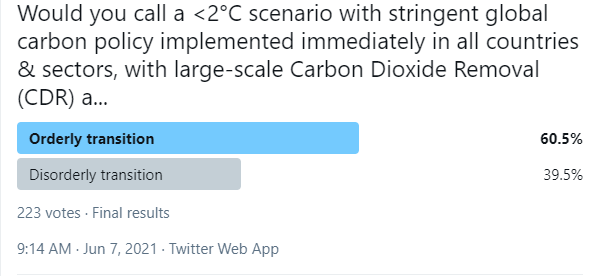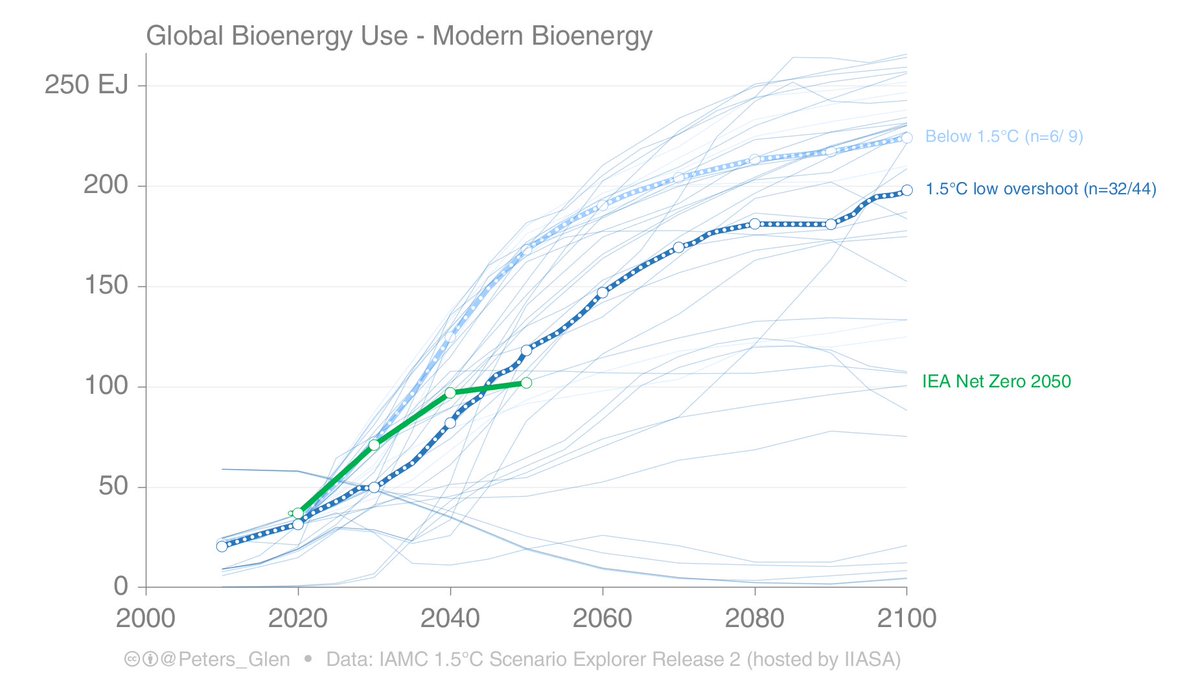
Increasingly scenario users are interested in 'where we are heading' as a baseline, rather than no climate policy scenarios (light grey) & SSP5-85 (RCP85).
"Current policies" are high-end for some users...
This is quite consistent with our comment:
nature.com/articles/d4158…
1/
"Current policies" are high-end for some users...
This is quite consistent with our comment:
nature.com/articles/d4158…
1/

Current policies may take the world to ~3.2°C (10-90% range 2.3-4.4°C due to climate uncertainties), which is much less than >5°C in SSP5-85.
The bold lines are from the NGFS scenarios used by financial institutions for 'stress testing', the thin lines are from IPCC SR15.
2/
The bold lines are from the NGFS scenarios used by financial institutions for 'stress testing', the thin lines are from IPCC SR15.
2/

Another organisation that has been doing work on 'where we are heading' is the @climateactiontr, which has quite consistent numbers as the NGFS (though quite different methods).
* NGFS is based on modelling
* CAT is more a statistical approach
climateactiontracker.org/publications/g…
3/
* NGFS is based on modelling
* CAT is more a statistical approach
climateactiontracker.org/publications/g…
3/

The @UNEP Emissions Gap Report is another example of using 'where we are heading' type scenarios, it is how the 'gap' is estimated.
[One can debate & discuss methods, no problem, but these scenarios are highly policy relevant]
unep.org/emissions-gap-…
4/
[One can debate & discuss methods, no problem, but these scenarios are highly policy relevant]
unep.org/emissions-gap-…
4/

The IEA has been doing 'where we are heading' type scenarios for years, and what we used in our commentary nature.com/articles/d4158…
Though, the IEA gets flak for this. The solar critiques are aimed at this scenario. Some users don't like 'where we are heading' scenarios...
5/
Though, the IEA gets flak for this. The solar critiques are aimed at this scenario. Some users don't like 'where we are heading' scenarios...
5/

An important policy-relevant community is those "who want better predictions about what might happen in the world as a whole" nature.com/articles/d4158…
Which is sort of obvious, but still needs Nature commentaries to make the obvious point(s) nature.com/articles/d4158…
6/
Which is sort of obvious, but still needs Nature commentaries to make the obvious point(s) nature.com/articles/d4158…
6/

Which brings me to @HectorPollitt's point, 'will anything change'?
Well, slowly at best. After 10 years of complaining, IAMs are only now starting to incorporate more critical thinking on CDR (for example).
7/
https://twitter.com/HectorPollitt/status/1403004826825289730
Well, slowly at best. After 10 years of complaining, IAMs are only now starting to incorporate more critical thinking on CDR (for example).
7/
We are certainly seeing a shift away from "no climate policy" baselines, certainly in the energy system modelling community. I think there will be at least a 5-10 year lag in the climate modelling community (& there are other reasons for using SSP5-85).
8/8
8/8
• • •
Missing some Tweet in this thread? You can try to
force a refresh













